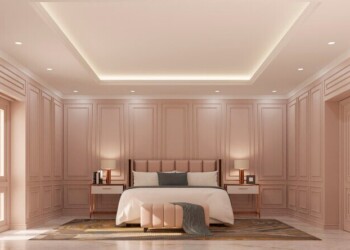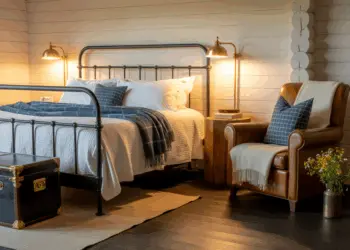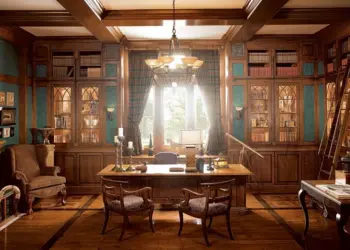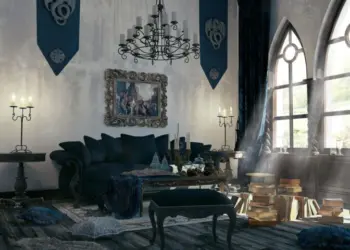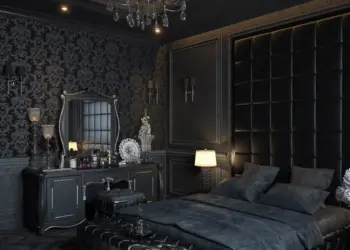Welcome, fellow interior enthusiasts, to the realm of neoclassical interior design: How To Get The Look! If you’ve ever dreamt of transforming your living space into a harmonious blend of timeless elegance and contemporary flair, you’re in for a treat. Neoclassical design, inspired by the classical architecture of ancient Greece and Rome, is making a roaring comeback in the modern era. So, fasten your seatbelts, folks, as we embark on a journey to revamp your home with sophistication and grace!
Table of Contents
Embracing the Timeless Aesthetic
So, what exactly is neoclassical interior design: A Go-To Guide to Get the Look? Well, imagine a space that echoes the grandeur of ancient civilizations while seamlessly integrating modern elements. It’s all about balance, baby! Neoclassical design draws inspiration from the past while ensuring your home doesn’t become a museum relic.
The Pillars of Neoclassical Design
- Symmetry Reigns Supreme: In the neoclassical realm, symmetry is the name of the game. Think of it as the yin and yang of interior design – a perfect equilibrium that brings a sense of order and balance to your space.
- Timeless Color Palette: Neoclassical interiors revel in a refined and neutral color palette. Think whites, creams, and muted tones, creating a canvas that lets architectural elements and furnishings take center stage.
- Architectural Flourishes: Channel your inner Greek god or goddess by incorporating architectural elements like columns, cornices, and moldings. These add a touch of opulence and sophistication to your abode.
- Luxurious Furnishings: Neoclassical interior design wouldn’t be complete without sumptuous furnishings. Think plush upholstery, rich fabrics, and furniture that exudes timeless elegance.
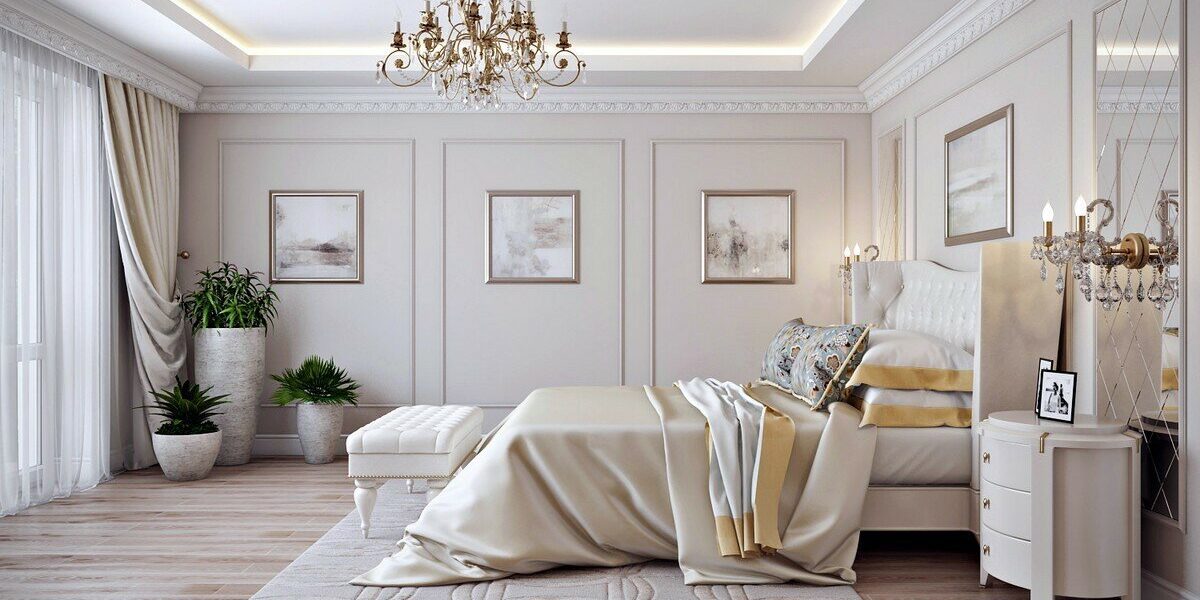
Executing the Neoclassical Magic
Now that you’re acquainted with the fundamentals, let’s delve into the nitty-gritty of executing neoclassical interior design in your space.
1. Mastering Symmetry in Furniture Arrangement
Picture this: You walk into a neoclassically inspired room, and the first thing that strikes you is the perfect symmetry in furniture arrangement. Sofas flanking the fireplace, chairs mirroring each other – it’s like a dance of furniture harmony!
Pro Tip:
- Use pairs of identical or matching furniture pieces to create a sense of balance.

2. Neutrals – the Unspoken Heroes
In the world of neoclassical interior design, neutrals are your trusty sidekicks. Embrace whites, creams, and soft hues to create a serene backdrop that allows other design elements to shine.
Pro Tip:
- Add pops of color sparingly with accessories like throw pillows, vases, or artwork to keep the space from feeling monotonous.
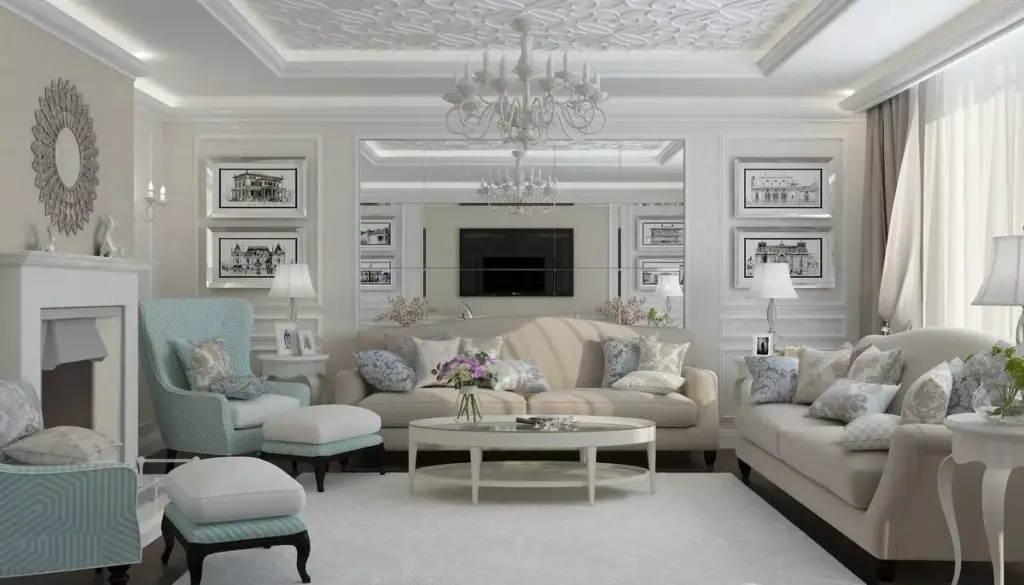
3. Architectural Wonders at Home
Now, let’s talk architectural elements – the showstoppers of neoclassical design! Columns, cornices, and moldings bring a sense of grandeur and history to your space.
Pro Tip:
- If your budget allows, invest in faux columns or molding to achieve the look without the hefty price tag.
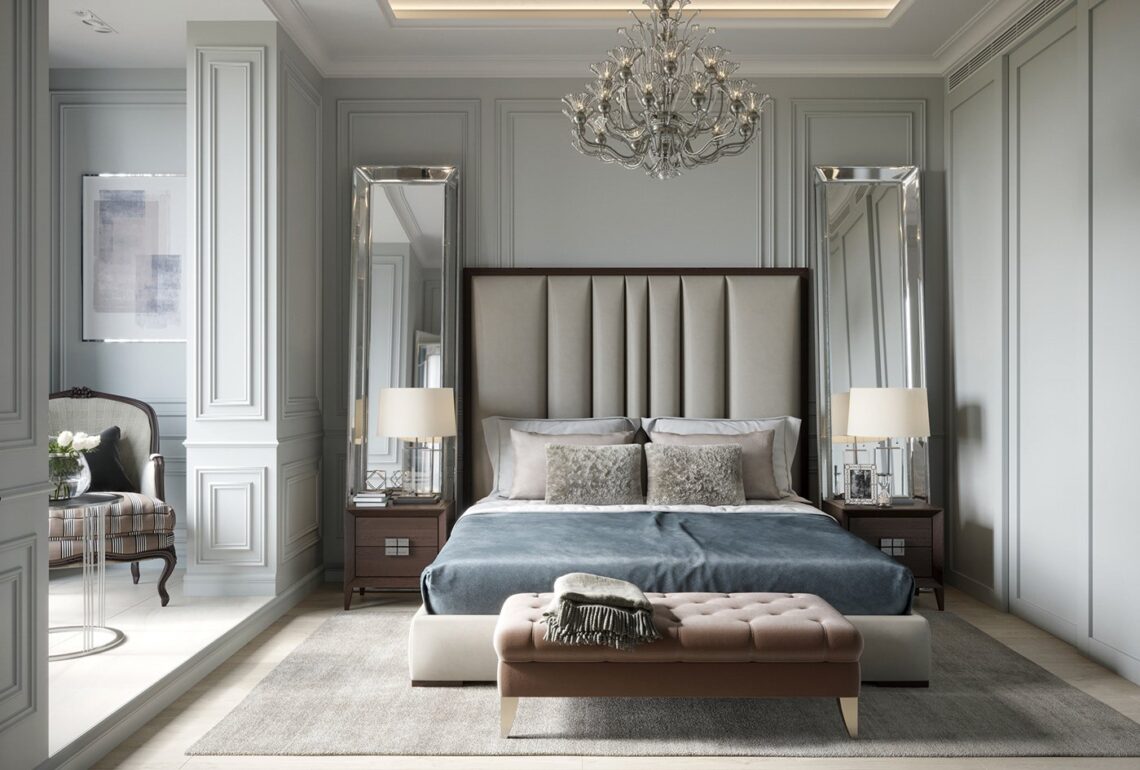
4. Furnishings Fit for Royalty
Ah, the furnishings – where comfort meets opulence. Opt for pieces with clean lines and traditional silhouettes, upholstered in luxurious fabrics like velvet or silk.
Pro Tip:
- Don’t shy away from mixing antique finds with modern pieces for a dynamic and eclectic design vibe.

5. Consider Color
In the palette of neoclassical interior design, muted and soft tones prevail. Explore shades of gray, blue, green, and yellow, complemented by whites and creams. Accent shades like black, silver, or gold add a touch of luxury, creating an ambiance that is both opulent and refined.
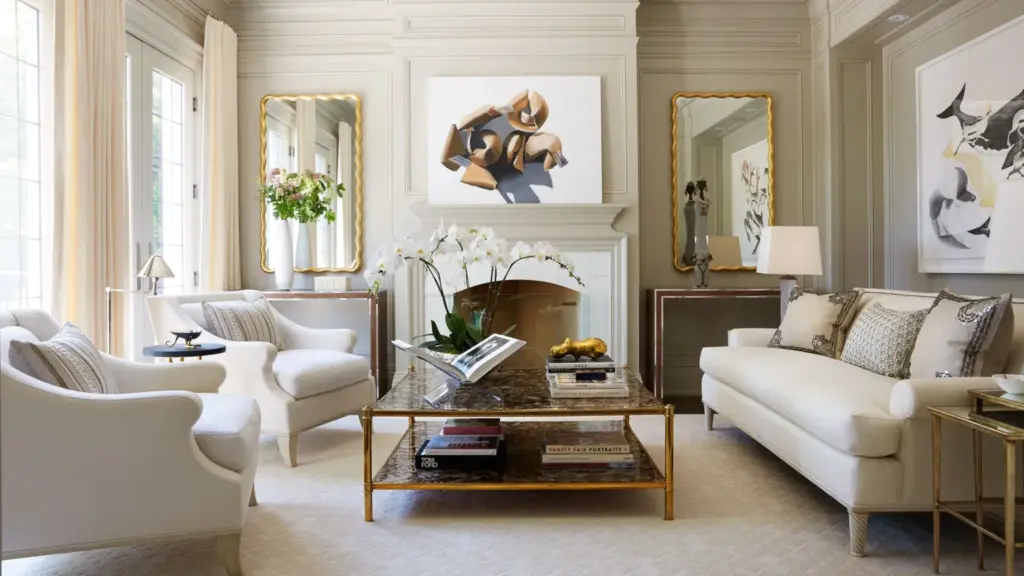
6. Dressing Windows for Grandeur
Architectural features demand balance. Floor-to-ceiling curtains in materials like linen, velvet, silk, or faux silk soften the neoclassical austerity. These not only add warmth but also accentuate the scale and symmetry of your interior.
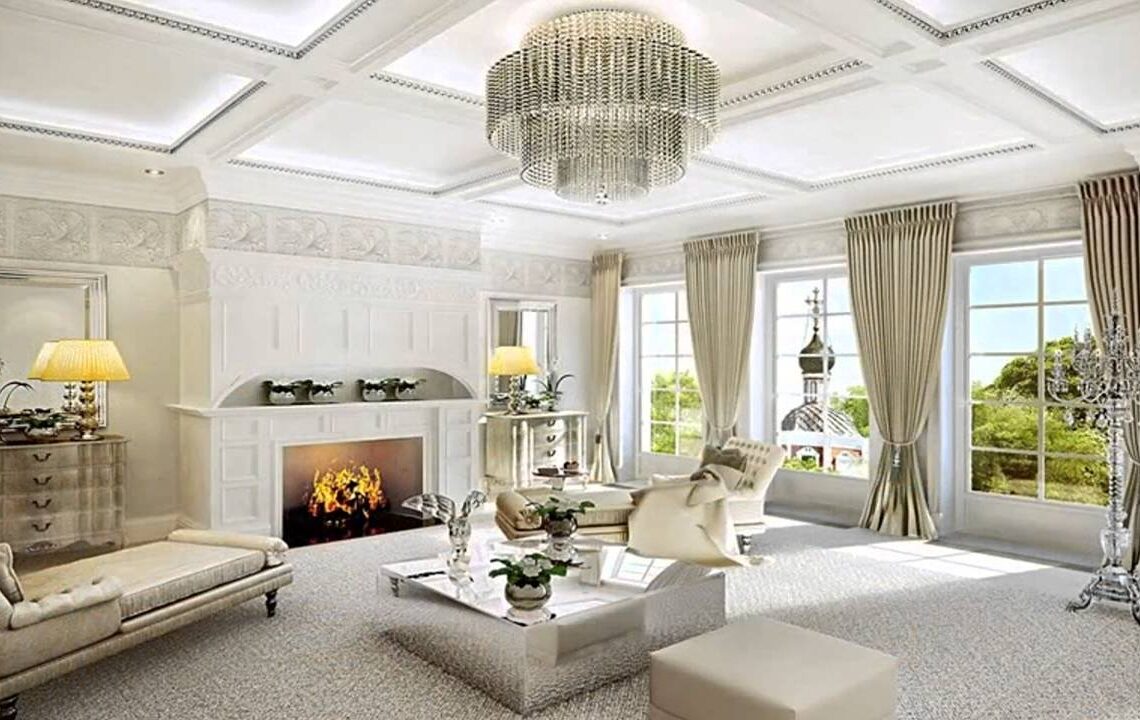
7. Thoughtful Neoclassical Decor
While exuding luxury, neoclassical design embraces moderation in decoration. Choose decor items that bring intrinsic value, such as Wedgwood china, statues, detailed vases, and mirrors. Let each piece stand alone, contributing to an elegant and uncluttered atmosphere.

8. Mirrors: Elegance and Functionality
Mirrors serve a dual purpose in neoclassical design, functioning as both decoration and light enhancers. Strategically placed mirrors not only amplify symmetry but also soften the straight-lined neoclassical look, adding an exquisite touch to the overall design.
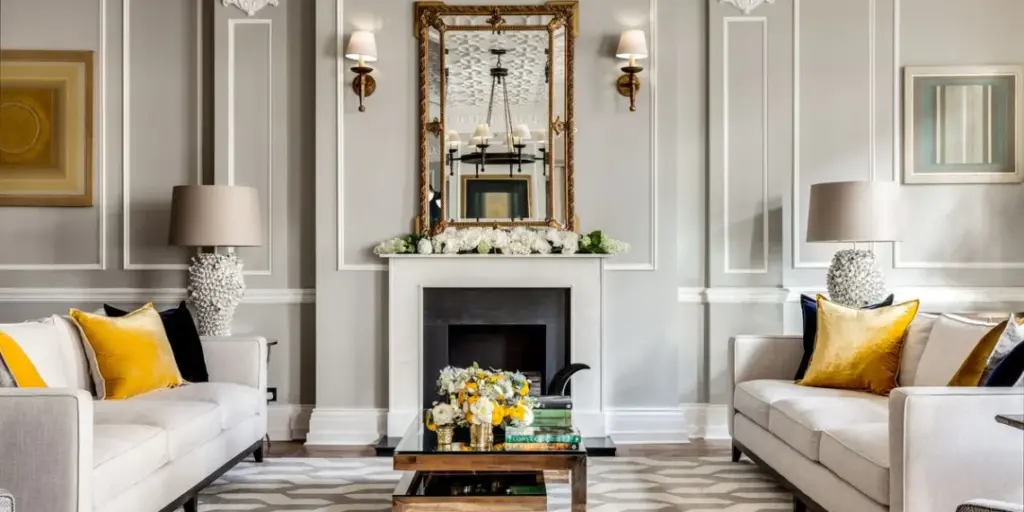
9. Cozy Rugs for Underfoot Warmth
Complete your neoclassical haven with a cozy rug underfoot. Beyond aesthetics, a plush area rug absorbs echoes in large rooms with hard floors, adding warmth and defining the desired atmosphere in your elegant space.
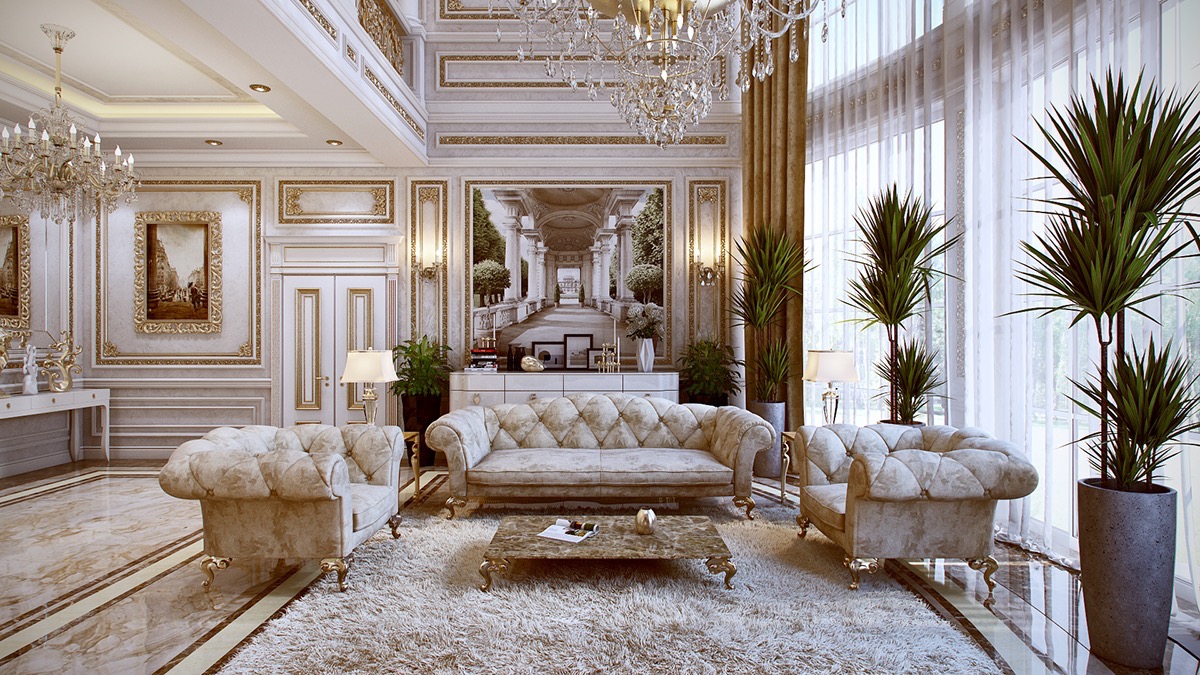
Bringing It All Together
As we wrap up our neoclassical journey, remember that this style is more than just a trend – it’s a timeless aesthetic that transcends eras. Neoclassical interior design: A Go-To Guide to Get the Look is your passport to creating a home that exudes sophistication, elegance, and a touch of historical charm.
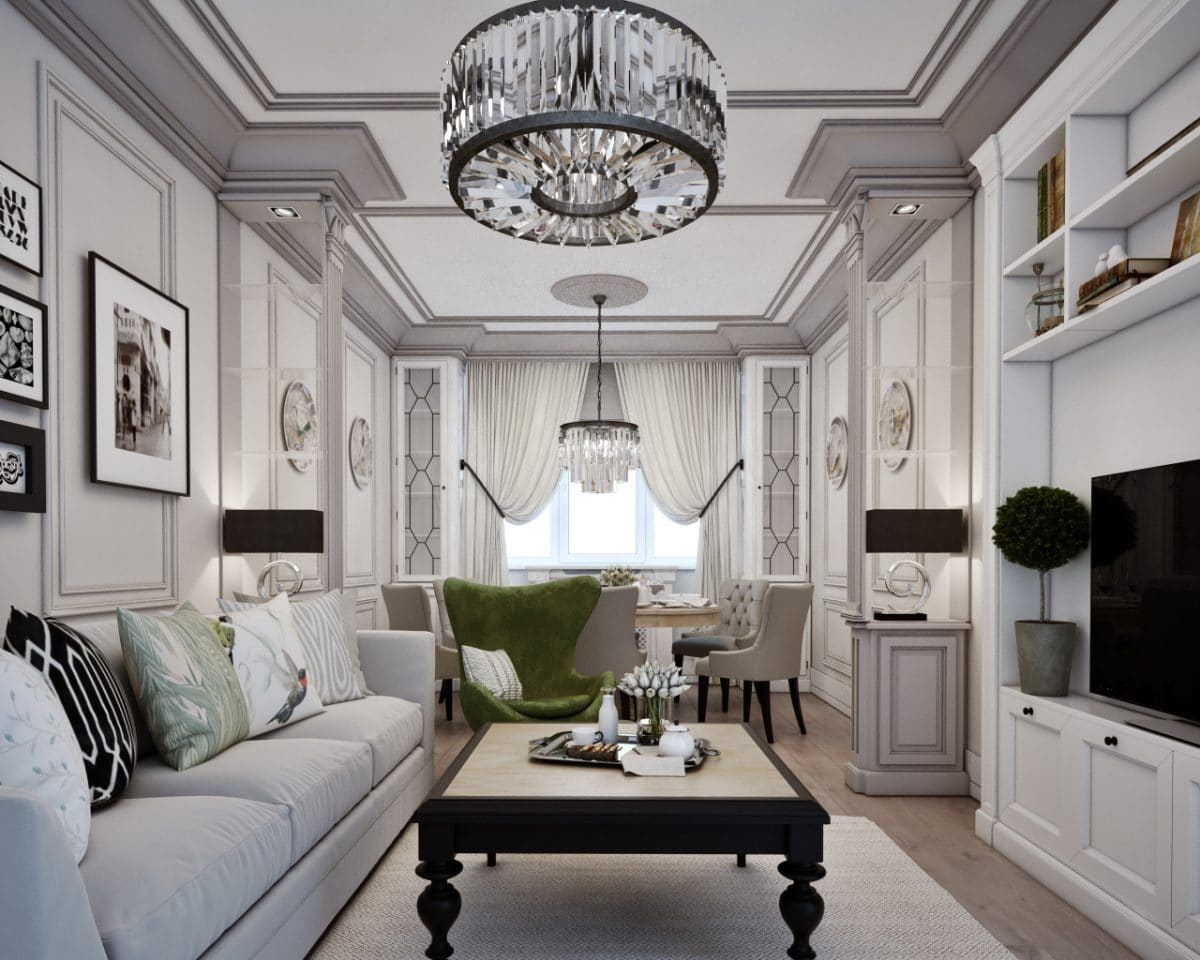
So, whether you’re a design novice or a seasoned pro, embrace the neoclassical allure and let your living space become a masterpiece that stands the test of time. Happy decorating!
FAQs
What is neoclassical interior design?
Neoclassical interior design draws inspiration from the aesthetics of ancient Greece and Rome, emphasizing timeless elegance and symmetry. It incorporates classical elements like straight lines, symmetry, and a predominantly pale color palette. The style often includes classical details such as Roman busts, sculptures, panelling, or decorative motifs, creating a sense of sophistication and balance.
What are the characteristics of Neoclassical style?
The characteristics of Neoclassical style include emphasized horizontal and vertical lines, timeless furniture, and artwork. Symmetry is a key element, reflecting the classical ideals of balance and proportion. Neoclassical design often features straight lines and a focus on architectural details that evoke the classical aesthetics of ancient Greece and Rome.
Can I Combine Neoclassical with Other Styles?
Certainly! Neoclassical design plays well with others. Experiment with blending it with contemporary, traditional, or even minimalist styles for a personalized touch.
What are neoclassical colors?
Neoclassical colors typically involve a predominantly pale color palette. More striking colors such as black, red, and silver are often used as accents to complement the overall classical and elegant look of the design.
What is the neoclassical design theory?
The neoclassical design theory revolves around reviving classical architectural and artistic principles from ancient Greece and Rome. It emphasizes order, balance, and harmony in design, often incorporating classical motifs and architectural elements to create a sense of timelessness and sophistication.
Is Neoclassical Design Suitable for Small Spaces?
Indeed! Neoclassical elements can be adapted to fit any space. Opt for smaller-scale furnishings, focus on key architectural details, and let light enhance the sense of grandeur.
What are the 5 characteristics of Neoclassicism?
The five characteristics of Neoclassicism include:
- Emphasis on horizontal and vertical lines.
- Timeless furniture and artwork.
- Symmetry in design.
- Use of classical architectural details.
- A predominantly pale color palette.
What are the three elements of neoclassical?
The three elements of neoclassical design often revolve around:
- Straight lines.
- Symmetry.
- A predominantly pale color palette, creating a classical and elegant aesthetic.


